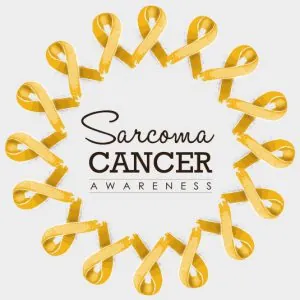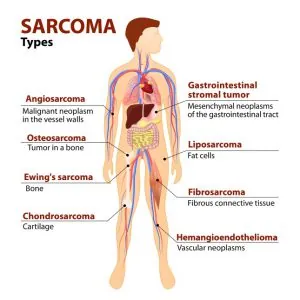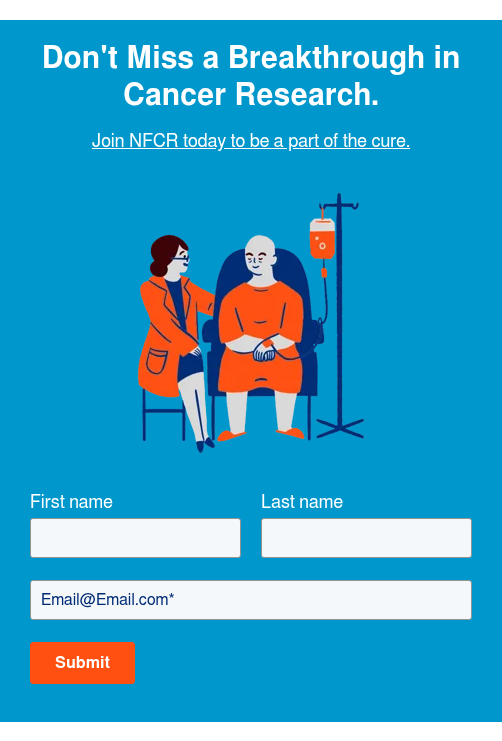5 Facts to Know about Sarcoma
July is Sarcoma Awareness Month. Deemed a “forgotten cancer” because of its rarity, sarcomas are cancers that start in bone, muscle, connective tissue, blood vessels or fat, and can be found anywhere in the body. In general, there are two types of sarcoma: soft tissue sarcoma and bone sarcoma with more than 50 different subtypes.

- An estimated 12,390 new cases of soft tissue sarcomas and 3,260 new cases of bone cancers will be diagnosed in the U.S. in 2017, with more than 6,540 deaths expected to result from the diagnosis.
- The overall relative five-year survival rate for people with sarcoma is around 50%.
- When the sarcoma starts in an arm or leg, the five-year survival rates are slightly higher for each stage when compared with sarcoma that starts in other locations.
- Sarcomas are notorious for recurring and metastasizing — despite complete resections.
Don’t forget to see how you can support Sarcoma Research with our Hope Fund for Sarcoma Research.
Here’s a list of five facts to know about sarcoma:
- Sarcomas are rare.
Sarcomas are rare in adults and make up approximately 1% of all adult cancer diagnoses. They are relatively more common among children. Between 1,500 and 1,700 children are diagnosed with a bone or soft tissue sarcoma in the U.S. each year. This makes up about 15% of cancers in children under the age of 20.
- Sarcoma can develop nearly anywhere in the body.
Common areas sarcoma tumors grow in include the legs, hands, arms, head, neck, chest, shoulders, abdomen and hips. About 50%-60% of soft tissue sarcomas occur in extremities (arms and legs).[i]
- For most sarcomas, the cause is not known.
Although there are no known risk factors for sarcoma, certain genetic conditions, radiation exposure and some chemicals may increase the risk of developing sarcoma in some individuals.
Genetic conditions such as Neurofibromatosis, Gardner syndrome, Li-Fraumeni syndrome, Retinoblastoma, Werner syndrome, Gorlin syndrome, tuberous sclerosis and damage to the lymph system can increase the risk of developing sarcoma.
Patients might also develop sarcomas from radiation given to treat other cancers like breast cancer, cervical cancer, lymphoma and retinoblastoma. The sarcoma often starts in the area of the body that had been treated with radiation, and on average, can take about 10 years to develop. Radiation exposure accounts for less than 5% of sarcomas.
Exposure to vinyl chloride, arsenic, dioxin and herbicides that contain high doses of phenoxyacetic acid may also increase risk of sarcoma. [ii]
Additionally, researchers are now studying genetic abnormalities and chromosome mutations as possible causes as well.
- Sarcomas are difficult to detect and diagnose.
Because they are so rare and can take multiple forms in multiple locations, sarcomas are difficult to detect and often misdiagnosed. In their early stages, soft tissue sarcomas rarely display any symptoms other than a painless lump. As the tumor grows, pain may occur depending on where the tumor is located, or if it presses on nearby nerves.
- If you’ve been diagnosed with sarcoma, get a second opinion.
With a rare and complex cancer, such as sarcoma, it is important to seek the best possible care to improve your chance of survival. Many doctors have never seen or treated a patient with sarcoma. Get a second opinion from a doctor that specializes in sarcoma about the initial diagnosis and the treatment plan, even if you are being treated at a major cancer center.Using advanced genomic and molecular technologies, NFCR-funded research has made significant discoveries in the development of and treatment for sarcoma.
The Hope Fund for Sarcoma
The Hope Fund for Sarcoma Research is a designated fund established by Ken and Marianne Bouldin in partnership with NFCR. The Bouldins founded the Hope Fund after their daughter Jennifer survived a type of sarcoma known as malignant peripheral nerve sheath tumor (MPNST). Show your support for sarcoma research! Together we will find a cure for sarcoma…and all cancers.














